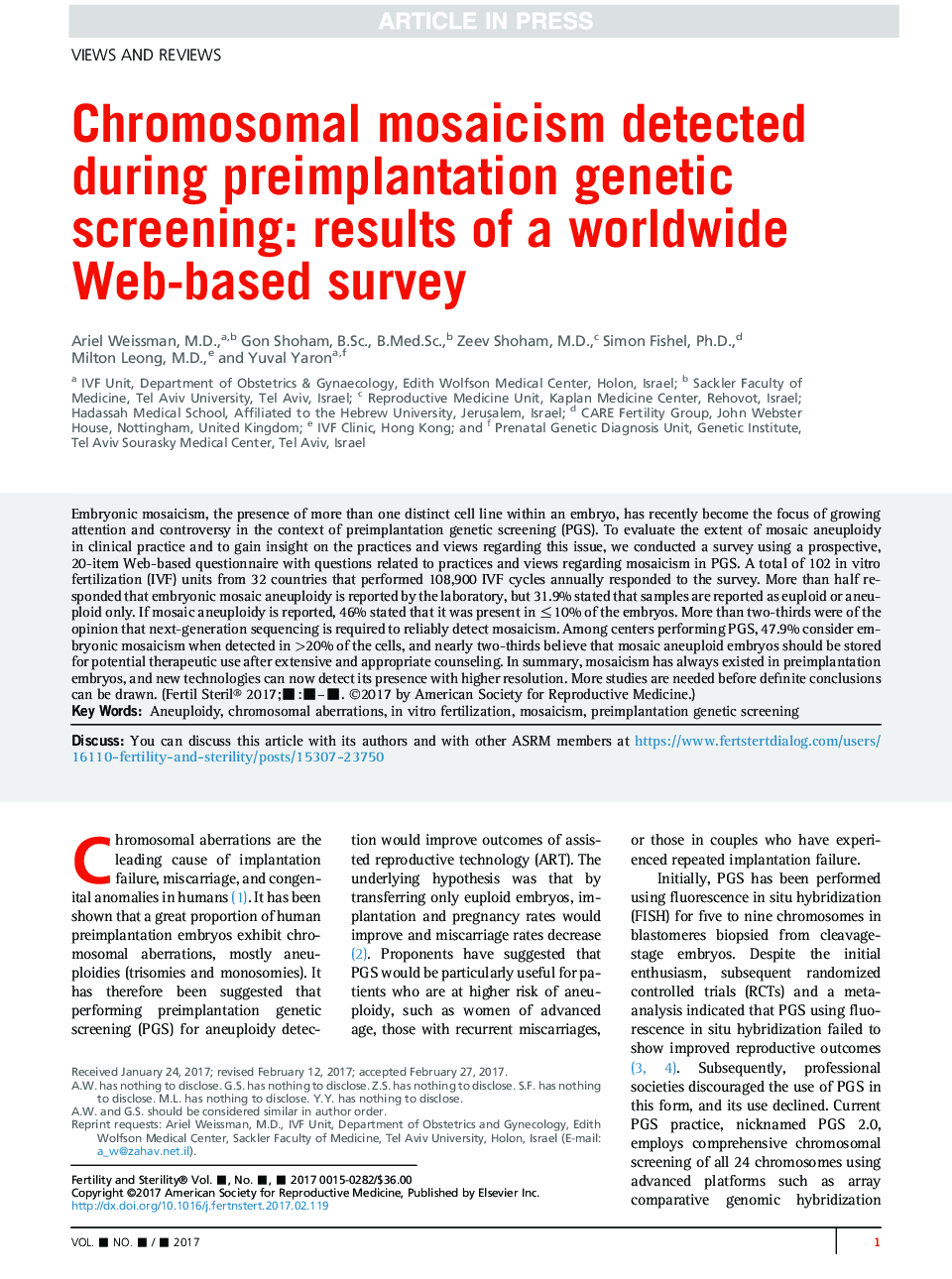| Article ID | Journal | Published Year | Pages | File Type |
|---|---|---|---|---|
| 5693696 | Fertility and Sterility | 2017 | 6 Pages |
Abstract
Embryonic mosaicism, the presence of more than one distinct cell line within an embryo, has recently become the focus of growing attention and controversy in the context of preimplantation genetic screening (PGS). To evaluate the extent of mosaic aneuploidy in clinical practice and to gain insight on the practices and views regarding this issue, we conducted a survey using a prospective, 20-item Web-based questionnaire with questions related to practices and views regarding mosaicism in PGS. A total of 102 in vitro fertilization (IVF) units from 32 countries that performed 108,900 IVF cycles annually responded to the survey. More than half responded that embryonic mosaic aneuploidy is reported by the laboratory, but 31.9% stated that samples are reported as euploid or aneuploid only. If mosaic aneuploidy is reported, 46% stated that it was present in â¤10% of the embryos. More than two-thirds were of the opinion that next-generation sequencing is required to reliably detect mosaicism. Among centers performing PGS, 47.9% consider embryonic mosaicism when detected in >20% of the cells, and nearly two-thirds believe that mosaic aneuploid embryos should be stored for potential therapeutic use after extensive and appropriate counseling. In summary, mosaicism has always existed in preimplantation embryos, and new technologies can now detect its presence with higher resolution. More studies are needed before definite conclusions can be drawn.
Keywords
Related Topics
Health Sciences
Medicine and Dentistry
Obstetrics, Gynecology and Women's Health
Authors
Ariel M.D., Gon B.Sc., B.Med.Sc., Zeev M.D., Simon Ph.D., Milton M.D., Yuval Yaron,
